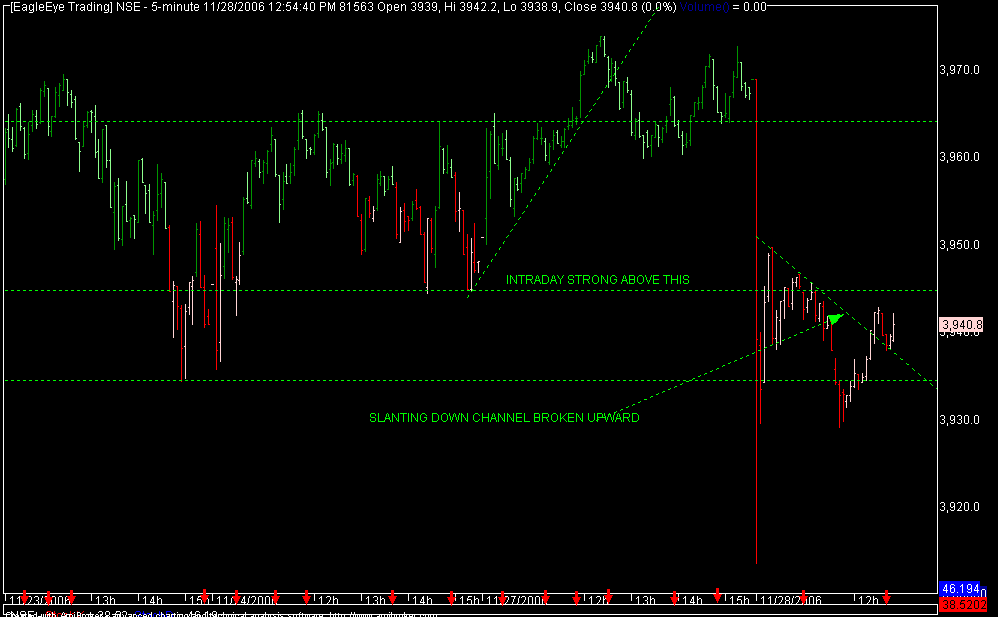Asia's fourth-largest economy grew 8.9 percent in the three months to Sept. 30 from a year earlier, matching the gain of the previous quarter, according to the median forecast of 17 economists in a Bloomberg News survey. The statistics department report is due tomorrow at noon in New Delhi.
Consumers in India are using their rising incomes to buy more cars, clothes, mobile phones and houses. That's stretching the production capacity of companies and fanning inflation, and may prompt the Reserve Bank of India to increase interest rates in its next monetary policy statement on Jan. 30.
``Inflation pressures are serious,'' said Rajat Nag, Managing Director General of the Southeast Asia department at the Asian Development Bank in Manila. ``Production capacities must be increased to prevent prices from rising. Interest rates may rise in the short term.''
India's benchmark wholesale price inflation rate held at 5.29 percent in the second week of November, above the government's ``tolerance'' level of 4 percent. Manufacturing inflation rose to 4.59 percent, the highest in 1 1/2 years, as companies including Hindustan Lever Ltd., India's biggest household products maker, raised prices of soap and toothpaste.
Chasing China
India's $775 billion economy has grown more than 8 percent in five of the past six quarters. China's $2.2 trillion economy, Asia's second largest, expanded 10.4 percent in the quarter ended Sept. 30, the quickest pace among the world's 20 largest economies and almost four times the 2.6 percent gain in the 12 European nations sharing the euro.
Reserve Bank of India Governor Yaga Venugopal Reddy in his last monetary policy statement on Oct. 31 said demand pressures exist in the economy and that production capacity must match economic expansion to prevent inflation flaring up.
Reddy and his fellow policy makers are expected to raise interest rates again at the beginning of 2007 as signs of ``overheating'' in the economy have emerged, the Paris-based Organization for Economic Co-operation and Development said in a report yesterday.
General Motors Corp., Royal Dutch Shell Plc. and other companies have invested in about 3,000 new factories and expansion projects worth about $21 billion in India since May 2004 to cater to growing demand, according to Finance Minister Palaniappan Chidambaram.
`Get Stronger'
``India's high growth trajectory is here to stay,'' said Brijmohan Lall Munjal, chairman of Hero Honda Motors Ltd., India's biggest motorcycle maker, currently building its third factory for $420 million. ``Incomes are rising, the government is spending more money to improve infrastructure. Economic growth will only get stronger from here.''
Per-capita income in India has doubled in the last nine years and the number of households earning an annual income of at least $10,000 is rising more than 20 percent a year, according to McKinsey & Co.
The creation of new jobs in the software industry and at call centers is putting more money in the hands of some 350 million middle-class Indians. For example, Dell Inc., the world's second-largest personal-computer maker, opened its fourth customer-service center in India this month as it seeks to reduce costs to shore up declining profit.
Cars, Mobile Phones
Agriculture production rose at the fastest pace in two years in the year ended March 31, increasing incomes of 650 million people who depend on farming for their livelihood.
That's helped companies such as Maruti Udyog Ltd., which sells half the cars bought in India, post a 40 percent gain in fiscal second-quarter profit as it sold more of its new WagonR and Swift hatchback models.
Bharti Airtel Ltd., India's largest mobile-phone service provider, said second-quarter profit soared 79 percent to a record because of a near-doubling of subscribers. India is the fastest-growing cellphone market in the world and companies added a record 6.71 million users last month compared with 6.07 million new users in September.
Growth in India's economy is also benefiting from Prime Minister Manmohan Singh's decision to increase spending on roads, ports and other infrastructure by a quarter to 992 billion rupees ($22 billion) in the year that started April 1 in a bid to attract overseas manufacturing companies and spur growth to 10 percent over a decade.
Public Works
Infrastructure spending is spurring demand for steel, cement and electricity in India, which spends a seventh of China's $150 billion investment in public works each year according to Morgan Stanley.
Governor Reddy last month left the central bank's reverse repurchase rate, or the overnight borrowing rate, unchanged while increasing the repurchase rate, or the overnight lending rate, by a quarter point to 7.25 percent, to give itself room to take further action to prevent ``overheating''.
The Reserve Bank of India, which for the first time said the economy is at risk of ``overheating,'' is reluctant to raise both the interest rates at its disposal at once to avoid slowing the economy too much.
``India can't afford to slow down its pace of growth,'' said Adi Godrej, chairman and managing director, Godrej Consumer Products Ltd., an Indian maker of personal-care items. ``India needs to grow faster to pull out large part of the population which is still reeling under poverty.''
Table of forecasts
-----------------------------------source :- bloomberg
GDP YoY
Firm Jul-Sep
-----------------------------------
Median 8.9%
Average 8.8%
High 9.7%
Low 7.5%
Number of Forecasts 17
-----------------------------------
Anand Rathi Securities 9.4%
Citigroup 8.5%
Credit Suisse 9.7%
Darashaw & Co. Ltd. 9.1%
DBS Group 8.4%
Deutsche Bank 8.3%
Forecast Singapore 7.5%
Global Absolute Research 9.1%
HSBC 9.0%
ICRA Limited 8.8%
IDBI Capital 8.5%
Ideaglobal 9.0%
ING Vysya Bank 8.9%
JPMorgan Chase 8.7%
Kotak Mahindra Bank 8.9%
Standard Chartered Bank 8.1%
Thomson IFR 9.6%
-----------------------------------



